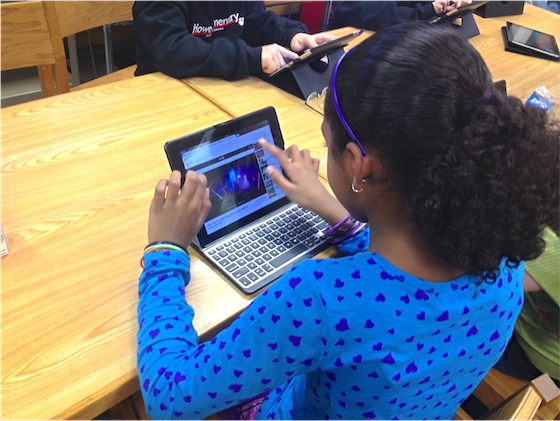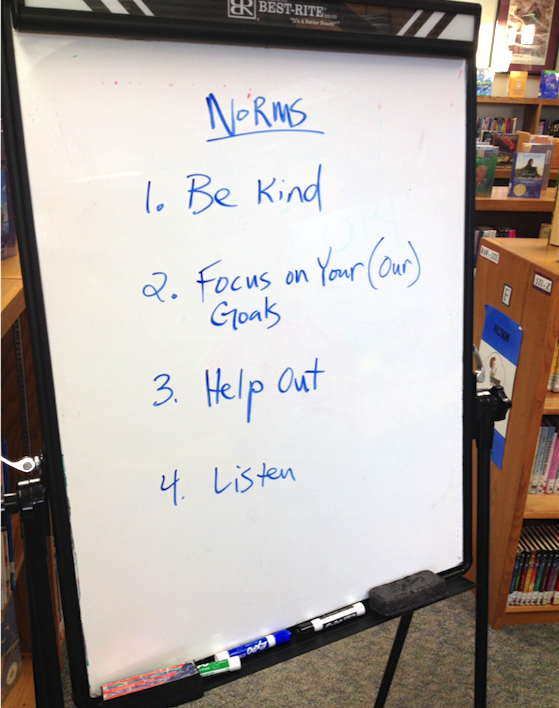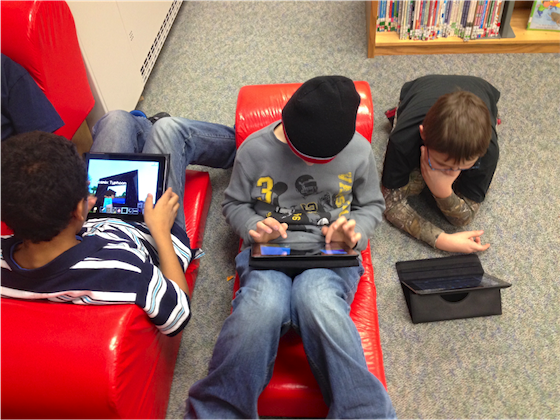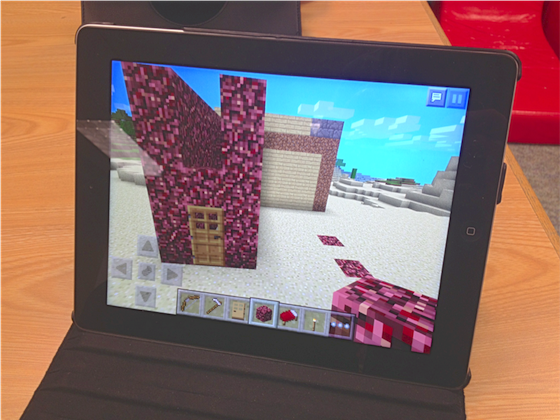Principal Matt Renwick is sharing weekly reflections about an afternoon computer club he and a teacher are sponsoring as an enrichment activity. (Here are the links to this eight-part series: Part 1, Part 2, Part 3, Part 4, Part 5, Part 6 and Part 7 and Part 8.)
Can you pick out the principal in this back-and-forth digital conversation?
Message 1: “So, do you think we should purchase the Minecraft EDU package for the iMacs? With the Pocket Edition on the 20 iPads, students are only getting to play it once per week.”
Message 2: “I agree, in that it would be nice to have more access. But I also like that they have to consider other digital tools to explore and create with. Maybe we could provide some quick mini-lessons on how to use these different tools? I don’t know, it’s up to you.”
Message 3: “You know, maybe you’re right. Let’s hold off on purchasing anything.”
Typically, in an email exchange between teacher and principal, it is the teacher asking the principal for more resources. But this isn’t your typical learning experience. With almost 50 students participating in an after school computer club twice a week, my teaching partner and I were seeing some shifting roles, both among our 3rd-5th graders and with ourselves.
Even though I am a principal, I was the one throwing out the possibility of an additional purchase, while the classroom teacher was questioning the need. Meanwhile, students were beginning to select what they wanted to learn and how they would learn. They created their own worlds in Minecraft, and developed the rules by posting them in the message board for visitors to read.
If this learning experience were a Seinfeld episode, it might be the Bizarro one, where up was down and left was right.
Wide open digital spaces
With our reversal of roles, we were (predictably) feeling a little discombobulated. But what adds to the complexity is that the digital universe is a wide open space. It’s what makes it so exciting, and also so scary sometimes. There are few rules, other than the ones we learn as you go. It sometimes feels like a 21st century version of the Wild West.

Beyond the scariness, there sometimes can also be too much choice. For instance, our students might ask us to explore new digital tools, such as Roblox. We have respectfully declined these requests. We feel they have not investigated the potential for learning found in the current digital tools we have suggested.
With limited access to Minecraft, it was also important to us that the students explore how different tools can complement one another. This is starting to occur. As an example, some have tapped into YouTube’s seemingly limitless number of Minecraft tutorials to learn from others outside our club.
The value of limits & norms
Having limits when attempting to be creative is not a bad thing. Consider the Winter Olympics going on right now. These athletes are extremely creative, whether during a shootout in hockey or executing a program in ice skating. The participants don’t change the rules or the framework within which they can perform in their respective sports. They work within their given constraints to foster something truly creative.
Sir Ken Robinson, author of Out of Our Minds, 2nd Edition (Capstone, 2011), also sees the advantages of limits when working in maker spaces. “Great workflow comes from working within formal constraints” (152).
My co-teacher and I also decided to structure our students’ time together by collaboratively developing group norms.

Each time we practice our procedures for coming into the library, sitting at the tables, listening to announcements, and sharing a brief mini-lesson, our students come to worry less about the learning environment and focus more on what they want to learn.
If you find yourself disagreeing with this format, consider how limits have enhanced how we learn online. Look at Twitter. The 140-character rule has produced some of the most interesting posts from our greatest thinkers (and preserved the “mini” blog concept). When the rules are set, the mind is allowed to play.
Sir Ken Robinson finds this basic tenet to be true. “The creative achievement and the aesthetic pleasure lie in using standard forms to achieve unique effects and original insights” (152).
Self-selected groups
Now that students have settled in a little bit, the groupings and collaboration that have been occurring are interesting. Even though the spaces they occupy within Minecraft are strictly digital, the students still physically congregate in parts of the room based on who they are working with. We haven’t investigated why they have self-selected into these particular groups.
What we do know is that there is very little tolerance for not following the rules. Students will immediately call out others if they start destroying stuff in Minecraft without people’s permission. It helps with accountability that one of our rules now is that we must use our real names when logging into Minecraft.
We are already starting to see some creative fruits from their digital labors. One student showed me a building he created. He shaped it as an “H” on the surface, in honor of our school (Howe Elementary). He then led me through the front door and showed me what lay beneath. Inside was an underground labyrinth of tunnels, stairs, and ladders. He was very proud of the complex structure he had built, located beneath a seemingly simple concept.
My insight: In their attempt to maintain a fair playing environment, the students are using the imposed limits to their creative advantage.

The Limitations of Limits
While limited choice can have its advantages, sometimes constraints can also stifle creativity.
For example, the Google Site we created to house our students’ passion profiles wasn’t allowing them to edit their pages due to permission issues. Also, the “clunkiness” of how Sites operates turned off a few kids from wanting to explore. In was also difficult to share with other schools looking to connect with us and learn from each other. These limitations did not serve to increase our students’ intelligence or skills.
In response, we are looking into learning management systems such as Edmodo to better share our thinking with peers in their presence and beyond. I guess it is important for educators to recognize when constraints can augment or hinder creativity, and then respond accordingly.

Matt Renwick
Latest posts by Matt Renwick (see all)
- How Do Digital Portfolios Help Students Learn? - August 1, 2014
- Should We Unconnect from Our PLNs Over Summer Break? - July 3, 2014
- Passion-Based Learning, Week 8: The End of the Beginning - April 30, 2014


I’ve installed edu and have been working with gr. 6 students to build a replica of our school. Very interesting because it brings in challenges of representing scale, proportion, and teamwork of course. I have a 30 min build time with 10 min of “PVP” in the playground. So far so good.
Thank you for sharing George. Your set up seems to allow your students maximum engagement in essential learning activities. I might have to share your idea (recreating the school) as a project possibility with my students.
Our Sr Hi computer class built our entire campus in Minecraft last year as a computer class project. Since then I have used that world with my 7th graders as a starting point for their own creations. Just finished our iMovies of the skits of their Minecraft creations. Building the campus is such a gift that can keep on giving.
Kathy, great point about provided students with starting points. Allowing learners to see what is possible can make the journey toward our goals more attainable. Very smart how you connected two different grade levels. Thanks for sharing!